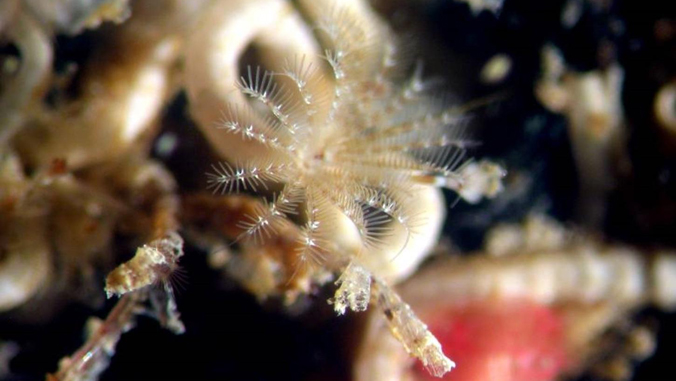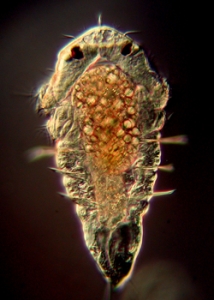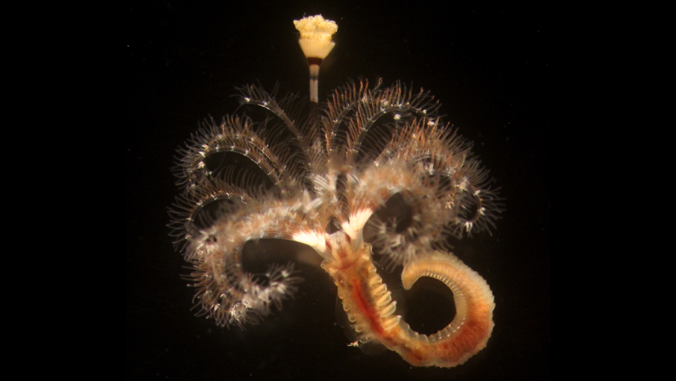
Most bottom-dwelling marine invertebrate animals, such as sponges, corals, worms and oysters, produce tiny larvae that swim in the ocean prior to attaching to the seafloor and transforming into juveniles. A study published in the Proceedings of the National Academy of Sciences and led by University of Hawaiʻi at Mānoa researchers revealed that a large, complex molecule, called lipopolysaccharide, produced by bacteria is responsible for inducing larval marine tubeworms, Hydroides elegans, to settle to the seafloor and begin the complex processes of metamorphosis.
“This is a major milestone in understanding the factors that determine where larvae of bottom-living invertebrates settle and metamorphose,” said Michael Hadfield, senior author on the paper and emeritus professor in the UH Mānoa School of Ocean and Earth Science and Technology (SOEST). “It is the key to understanding how benthic (underwater) communities are established and maintained on all surfaces under salt water, that is, on 71% of Earth’s surface.”

Finding the right spot to settle
Most invertebrate larvae are capable of staying in the larval stage for extended periods of time until they find a right spot. In the study, led by Marnie Freckelton, a postdoctoral researcher at the Kewalo Marine Lab, a unit of the Pacific Biosciences Research Center (PBRC) in SOEST, the research team asked the question: how do ‘right spots’ cue larvae to settle and metamorphose?
Metamorphosis is a profound change in the animal’s form—from a small swimming larva to an animal with a very different anatomy anchored to the seafloor. Although researchers have known that biofilms, thin layers comprised of bacteria, diatoms and small algae that blanket submerged surfaces, induce metamorphosis of a wide range of marine invertebrate larvae, the mechanism of induction remained poorly understood.
In laboratory experiments with larval tubeworms, the team found that they would not settle on clean surfaces. They required a cue from a surface biofilm.
“The team isolated a single bacterial species, Cellulophaga lytica, that could, when formed into surface biofilm, induce the worm larvae to settle, and then we asked: what is it about that particular bacterium that causes the larvae to settle and metamorphose?” said Freckelton.

With a series of enzyme experiments, the researchers eliminated protein-based bacterial compounds as potential settlement inducers. From there, they investigated, one-by-one, various lipid-containing compounds and identified the trigger—lipopolysaccharide, which forms the outer coat of most marine bacteria.
Selective response to local bacteria
They studied the biofilm-bacterial communities from many different habitats to learn what bacterial species were present and how they compared across communities. They discovered that, although thousands of bacterial species make up the biofilm in any given marine habitat, they vary significantly from one location to another.
“In fact, we have different strains of the same bacterial species obtained from Kāneʻohe Bay and Pearl Harbor, and the Hydroides larvae settle only in response to the one from Pearl Harbor,” said Hadfield, who has been a researcher at the Kewalo Marine Lab in PBRC since 1968. “Furthermore, we found in our lab that larvae of the coral Pocillopora damicornis, which is abundant in Kāneʻohe Bay, will settle only in response to the Kāneʻohe Bay strain of the bacterium. This is a breakthrough, because it tells us about the specificity of certain bacteria that guide and maintain a community of animals where they occur.”
This work is an example of UH Mānoa’s goal of Excellence in Research: Advancing the Research and Creative Work Enterprise (PDF), one of four goals identified in the 2015–25 Strategic Plan (PDF), updated in December 2020.
For more information, see SOEST’s website.
–By Marcie Grabowski


